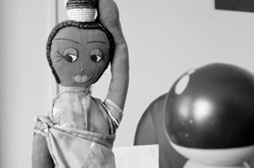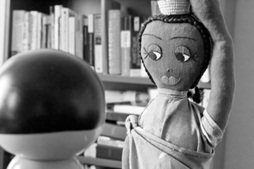IJNet presents part two of a four-part guide to shooting videos and photos. This guide focuses on lighting techniques and finding the line in video shoots.
Lighting
There are many ways to create light, but for most shoots you will have to make do with what is there. There are a few things to consider with arranging lighting: angle, amount and color.
-
Angle - The best angle for the brightest light is typically above the subject’s eye level and close to the direction they are looking. Always make sure there is more light on the camera side of the subject than on the far side. Bright lights in the background are distracting and being backlit will make your subject seem less clear and more mysterious.
-
Amount - If you are using automatic settings on your camera, you should try to get as much light as possible. The best way to get an ample amount of light is to shoot outdoors, but be careful of harsh shadows. Try to shoot in the morning, evening or on overcast days. If you can’t shoot outdoors or during the day, try to shoot in the best lit room available.
- Color - Light comes in a variety of whites but people rarely notice. Human brains interpret color for us and adjust the information our eyes get to keep white true. But cameras rely on computer chips to do this and the results can be unfortunate. As a general rule, think of incandescent lights as orange, sunlight as blue and fluorescents as green. If your camera is set to an automatic setting, it will automatically adjust the color to create a true white. The most important thing to avoid is mixing color. This can create unwanted effects in your shot and challenges the automatic white balance of your camera.
In order to not mix colors, try to stick to one type of light source. If you have a fluorescent lit room, avoid opening a window to brighten the room. Try to find more fluorescent lights, or turn off the lights and open the windows all the way.
You will have to mix light colors from time to time. When mixing is not avoidable, try to mix the colors evenly. For example avoid a subject whose left side is lit by fluorescent lamps and right side is lit by an open window. Try moving the lamp next to the window so the colors will blend.
Line
The easiest way to think of the line: only shoot one side of a subject. If you were to look at your subject from above and draw a circle around it, you would only want to shoot from 180 degrees of that circle. You would not want to shoot from all 360 degrees. The line exists wherever you imagine it, but people have some built-in cues that make some line placements better than others. People naturally create a line where they look. It is typically better to choose one side of a person based on which profile gives you the best image. Once you have decided where your line will be, stick with it.


 The sequence above maintains the line. It always shows the left side of the small doll and the right side of the large doll.
The sequence above maintains the line. It always shows the left side of the small doll and the right side of the large doll.
The sequence below breaks the line in the last frame. The last cut will feel slightly off and confusing to the viewer, though they may not know why.




